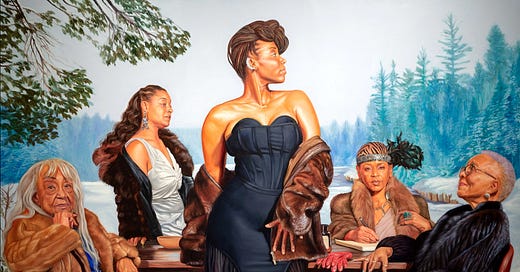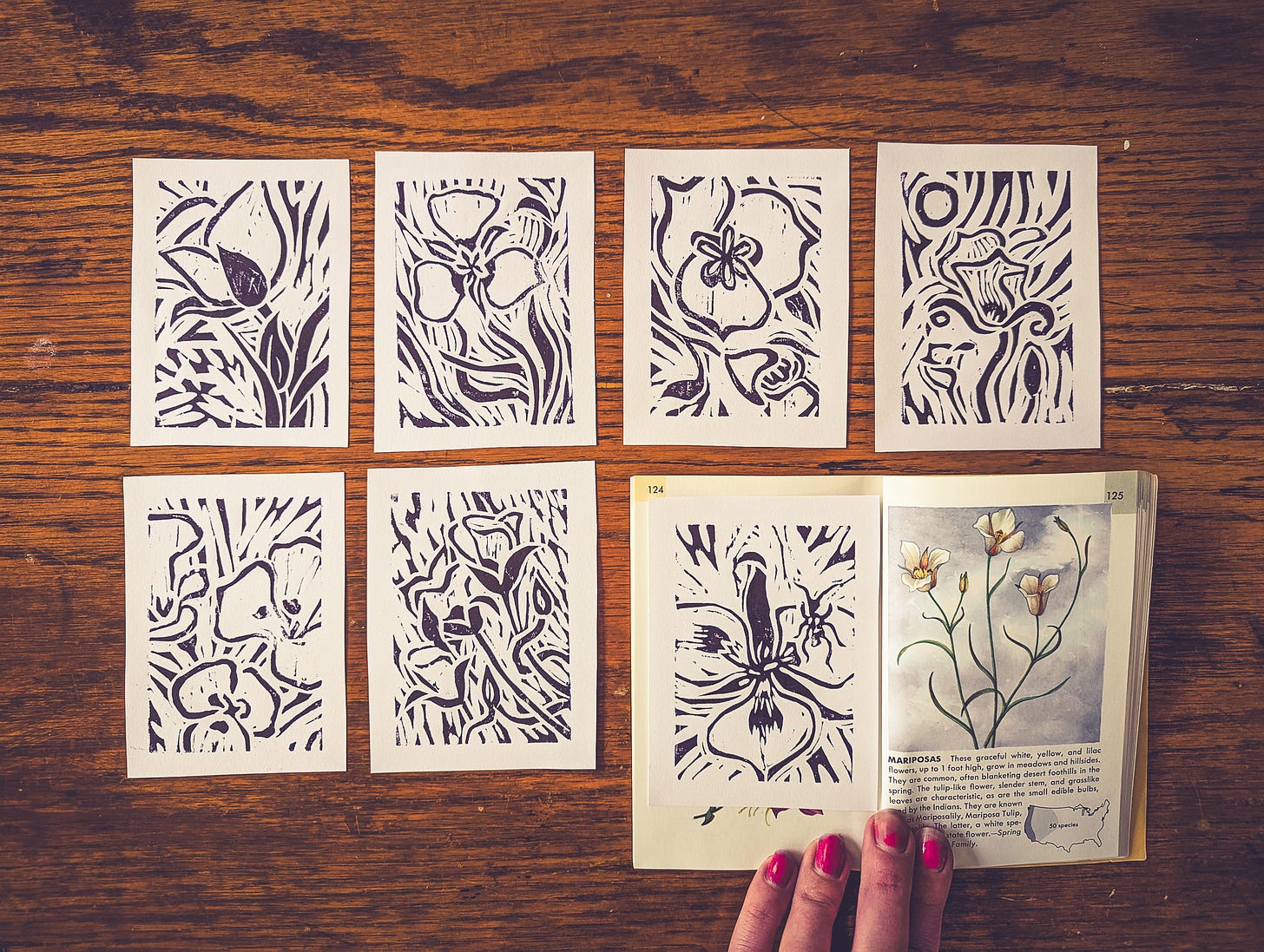MARIPOSA: These graceful white, yellow, and lilac flowers, up to 1 foot high, grow in meadows and hillsides. They are common, often blanketing desert foothills in the spring. The tulip-like flower, slender stem, and grasslike leaves are characteristic, as are the small edible bulbs, used by native people. They are known also as Mariposalily, Mariposa Tulip, or Segolily. The latter, a white species, is the Utah state flower. — Spring and summer. Lily family.
~ FLOWERS by Dr. Herbert Zim and Dr. Alexander Martin
I made a rare trip to the big city, a city I once called home. I ate up the energy that pulsed from the streets and the buildings, hovering like century-old white pines. I didn’t know that I missed this. Just as we are rejuvenated by spending time in nature, we can also be invigorated by the hum of humanity. I refuse to believe that the world would be better off without this humanness.
I stopped at the art museum. It is so important that we have artists. Art touches on something that words cannot. It holds an essence of the Great Mystery, the Source of all things, the unexplainable longings and the unanswerable questions. It defies time, race, lineage, and place so that it can reach past all of our defenses and touch the unguarded heart.
As soon as I reached the top floor gallery I was confronted with Pillars of the Frontier. A life size oil painting by Mario Moore, an artist from Detroit, where my childhood began.
The gaze of each woman is captivating. Looking out at the viewer, assessing their intentions, quietly observing with a keen eye. Looking up at the next generation, proud of the legacy she will leave. Looking forward to the future and the challenges ahead, with defiance and maybe a touch of resignation. The pillars of the frontier, a community of strong women.
The fur coats worn by each woman represent the labor of ensalved people who helped run the fur trade through Detroit in the 1700’s and 1800’s. The cold winter scene reminding the viewer of the brutal conditions transporters had to endure, but also of the hostile modern environment Black people navigate. The models depicted were friends and family of the artist, making it feel even more real and lived in. The women themselves represent the resilience and stamina of their people throughout the history of the city and of the country.
This gathering of generational women reminded me of a conversation I had with Nathan Wright, an indigenous herbalist and a member of the Sault Tribe of Chippewa Indians. During such tumultuous times, he told me the path to reconciliation was to connect to our matrilineal roots.
He spoke of the similarities between the indigenous sweat lodges and the traditional nordic saunas, the beat that ran parallel between the drum dances of native tribes and those of middle eastern folk cultures. There is a shared DNA somewhere there, just as the Appalachian mountains share DNA with the rolling mountains of Great Britain. So very faint, separated by millions of years of continental drift, but still there.
His words finally clicked. How can we heal if we can’t find common ground first? How do we have unconditional compassion and empathy for a stranger if we can’t relate to them on a familial level? This isn’t to imply that we should forget the past and current violence and challenges. But to move forward, we must first go deeper.
Looking at the painting and remembering that conversation, I felt the quiet knocking of grandmother medicine coming up again and again. This matrilineal wisdom has unfolded in front of me over the past year or so. Maybe it’s a mirror of my own journey or a call from some deeper void, but it feels like important work in this moment.
I don’t make resolutions at the beginning of each year. Rather, I choose a word that I would like to embody for the year ahead. This year it was clarity. That trip to the city gifted me another nugget of this. From our human grandmothers, to our plant grandmothers, and also the symbolic archetype grandmother are calling, not just for a quick nod, but for deep exploration. I want to dive deeper into what they represent and what guidance they may have to move through this world we are confronted with.
Grandmother medicine is comforting, but doesn’t hold her tongue.
Grandmother medicine has seen war and famine and dark days, but she keeps that mischievous look in her eye.
Grandmother medicine loves her people, but is content sitting at the edge of the room to simply observe.
Grandmother medicine remembers the old ways of using her hands, for nourishing and healing and worshipping.
Grandmother medicine knows what it takes to survive in a hard world, though she has not forgotten her forbidden devotions, practiced behind closed doors.
Grandmother medicine walks the same steps, along the same streams and over the same hills, content in her daily journey, year after year, her essence seeping into the earth so that the flowers know her name.
Grandmother medicine tucks her mysteries into her shawl, shaking them free under the dark new moon as she lets down her hair.
Grandmother medicine ventures into the wildness of the dark forest knowing she is both feared and fearful, but hiking on nonetheless.
Grandmother medicine is a walking contradiction, a true embodiment of the wild secrets of the universe.
But what does connecting with grandmother medicine actually look like? Firstly, it’s not trying to be good, to do things we think we must do. It’s not in our mind, but in our body. It’s making the old recipes, planting your ancestral plants, learning the old language, exploring cultural craft and dance and song.
It’s all the things the grandmothers did that made them different from the dominant culture. And through these things comes connection, within communities and across communities. Who knows what could bloom.
May we all find our own grandmother medicine to guide us in the days to come.
Much love,
Val
P.S. Feel free to share, it’s much appreciated!
2025 Planners are now on sale!
If you want to move deeper into a seasonal land-based life, consider ordering my 2025 Lunar + Seasonal Planner. Because learning to live in tune with the land doesn’t come from grand gestures or life-altering shifts, but rather from daily routines, devotions and observations of the land and how we relate to it.
This yearly planner weaves seasonal land-based practices with modern living so that you can live more intentionally and presently within every season of your life. It was created for the plant people, the land lovers, the gardeners, and the seekers to plan their lives around the rhythms of the earth as our ancestors have for thousands of years. More than just a planner, it is a practical yet spiritual guide to living, working, gardening, and celebrating in tune with the ever-shifting world around us.
Become a free subscriber for weekly musings from the forest. To receive my monthly full moon guide, consider becoming a paid subscriber.








Loved this article! Thank you.